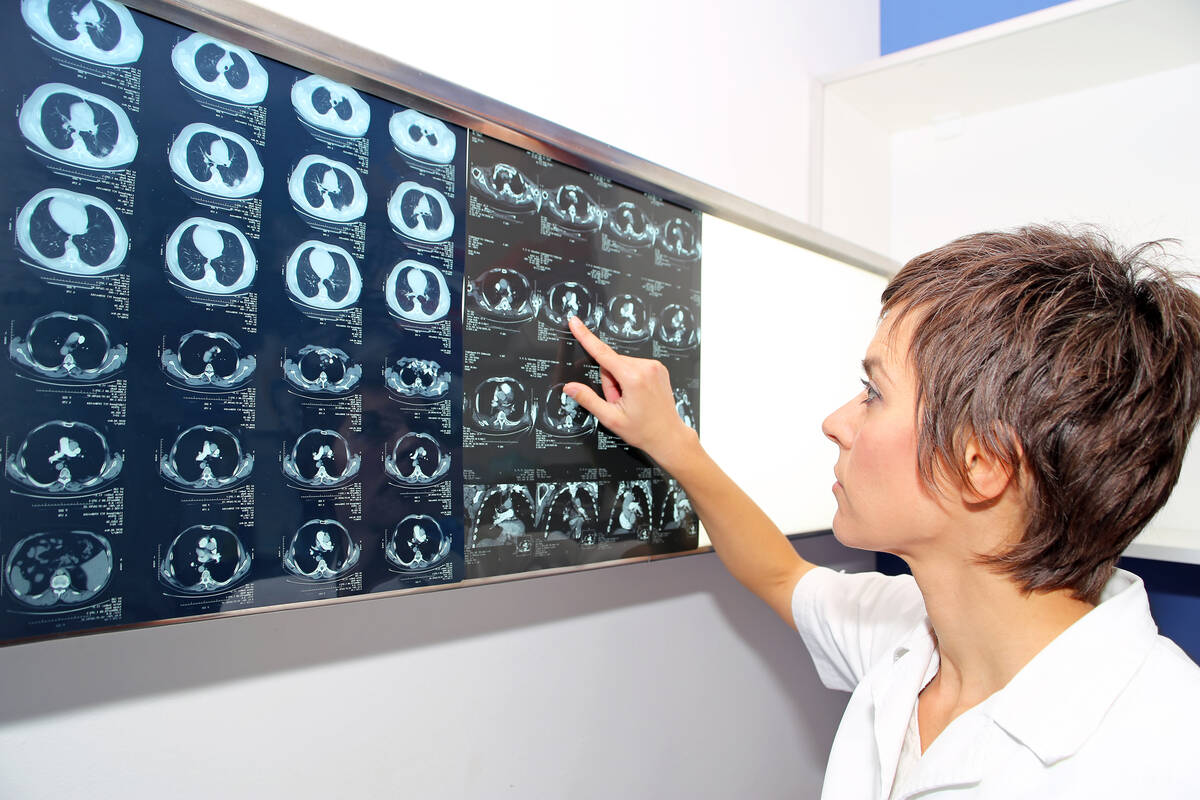Doctors explain what a blood clot feels like
Everyone bleeds, and in most cases, blood clotting, or coagulation, is a good thing.
“A blood clot (also known as a thrombus) is a jello-like material that your body creates to stop bleeding when you suffer a cut, scrape or another injury,” explains Dr. Angelo Marino, Yale Medicine interventional radiologist and assistant professor of clinical radiology and biomedical imaging at the Yale School of Medicine.
The clot, a mixture of several components found in blood, including platelets, specialized protein clotting factors and red blood cells, usually dissolves once completed or incorporates into its surrounding as scar tissue (collagen).
However, in some cases, blood clots form when they shouldn’t, and that might restrict or prevent blood flow to vital organs. In these cases, blood clots can be a life-threatening condition.
What is a blood clot?
Marino explains that clots can form in arteries, “a network of highways that transport blood that is rich in oxygen and nutrients from the heart to our organs and body parts,” and veins, “highways that bring used blood from the organs back to the heart.”
When a clot forms in a major vein (most commonly in the leg) it is called a deep vein thrombosis. “In some instances, the clot can detach from its point of origin and travel to the lungs, called a pulmonary embolism. A blood clot in the arteries of the heart causes a heart attack, whereas in the brain it leads to a stroke,” he says.
How common are blood clots?
Dr. Darren Mareiniss, chairman of the Department of Emergency Medicine at Trinitas Regional Medical Center, explains that venous thromboembolism (VTE), defined as deep vein thrombosis (DVT), pulmonary embolism (PE), or both, affects an estimated 600,000 individuals in the U.S. each year. “Blood clots are extremely dangerous if not treated, and as many as 100,000 people die each year of VTE,” he says.
He adds that PE is the leading cause of death in patients with cancer after cancer itself and is also a leading cause of death in pregnancy and the postpartum period.
What are the risk factors?
There are several well-known risk factors for venous thromboembolism, according to Mareiniss. These include a cancer diagnosis, immobility, recent surgery, pregnancy, estrogen therapy, old age, recent trauma and obesity.
“In addition, some individuals have genetic predispositions to form thrombus,” he says.
What does a clot feel like?
Marino explains that the symptoms of a blood clot depend on which body part the clot is in and whether it is in an artery or vein. “In general, a clot in a vein will cause symptoms related to blood backing up, like a clogged drainage pipe in your house will lead to water backing up,” he says.
The most common symptom of DVT is swelling in the affected leg, usually in the calf, explains Dr. Hamid Mojibian, Yale Medicine’s director of cardiac CT/MR imaging. “This swelling may be accompanied by redness and warmth in the area,” he says.
A person with DVT may experience pain or tenderness in the affected leg, especially when standing or walking. “This pain may feel like a cramp or ache and may be felt in the calf or thigh,” Mojibian said. “In some cases, the skin over the affected area may become discolored, appearing blue or red.”
The affected leg may feel warm to the touch, indicating increased blood flow in the area, he says. “People with DVT may describe a heavy or achy feeling in the affected leg as if they have been overworked or strained.”
PE occurs when a thrombus in the venous system breaks off and circulates through the right heart into the pulmonary arteries, effectively occluding blood flow and preventing oxygenation of venous blood, Mareiniss says. The symptoms of PE include chest pain and shortness of breath.
“The patient often complains of classic pleuritic chest pain in which pain increases with deep breathing,” he says. “Unfortunately, sudden death is the first symptom in 25 percent of people that develop a PE.”
A stroke occurs when a blood clot stops blood flow to the arteries of the brain, which can cause weakness on one side of the body, difficulty speaking, visual issues or disorientation. “A clot that stops the blood flow to the heart (heart attack) can cause chest tightness/pain, trouble breathing, sweating, and arm or shoulder discomfort,” Marino says.
If you suspect a blood clot
If you believe you have a blood clot, you should immediately be evaluated by a doctor or advanced practice provider, Mareiniss says. “Individuals with symptoms of chest pain or shortness of breath should be acutely evaluated in the emergency department.”
A diagnosis may require diagnostic imaging or other testing. Once diagnosed, treatment will depend on the location of the clot as well as the severity and duration of symptoms.
“The go-to treatment for blood clots is anticoagulation, which are medicines commonly known as blood thinners,” Marino explains. “They work by preventing clots from forming and also can break down existing clots.” These include Coumadin, Heparin, Lovenox, Eliquis (apixaban) or Xarelto (rivaroxaban), Mareiniss says.
If symptoms are severe, drugs called thrombolytics may be administered through an IV. “They act quickly to dissolve the clot, but only work when the clot is freshly formed,” Marino says.
There are also minimally invasive treatments that can be used to eliminate the clot. One treatment, catheter-directed thrombolysis, involves using a small tube (catheter), which is inserted under image guidance directly into the clot to deliver the clot-dissolving medicine. “This treatment also works best when the clot is fresh,” he says. However, given the risk of bleeding when these drugs are administered, a subset of patients will not be candidates for these treatments.
“Another minimally invasive treatment, which is newer, involves using a catheter to physically remove the blood clots. This procedure, known as catheter-directed thrombectomy, has revolutionized the care of patients with large strokes,” Marino continues.
Some clots, particularly chronic ones, may require more invasive surgical removal.



















